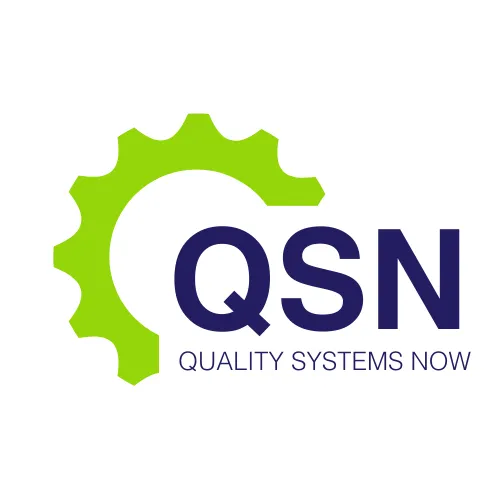LATEST NEWS

Teach Your Team to Write Documents That Are Simple
Whether it’s a technical specification, a user manual, or a regulatory submission, the ability to convey complex information in a simple and user-friendly manner is essential. Writing in plain language not only enhances understanding but also ensures compliance, reduces errors, and improves user satisfaction. Teaching your team to write documents in plain language has become a necessity.
What Is Plain Language?
Plain language is a style of writing that prioritizes clarity, simplicity, and accessibility. It involves using straightforward vocabulary, concise sentences, and a logical structure to ensure that the intended audience can easily understand the information. Plain language is not about “dumbing down” content but rather about making it as clear and effective as possible.
In the medical device industry, plain language is particularly important because it bridges the gap between technical experts and end-users, such as healthcare professionals, patients, and regulatory authorities. By adopting plain language, your team can create documents that are not only compliant with regulatory requirements but also user-friendly and impactful.
Why Plain Language Matters in the Australian Medical Device Industry
1. Regulatory Compliance
In Australia, regulatory bodies such as the Therapeutic Goods Administration (TGA) emphasise the importance of clear and concise documentation. The TGA requires that medical device labelling, instructions for use, and promotional materials be written in a way that is easily understood by the intended audience. In 2025, this expectation extends to all documentation, ensuring that manufacturers meet Australian standards for clarity and transparency.
2. Enhanced User Safety
Medical devices often come with complex instructions for use, maintenance, and troubleshooting. If these instructions are unclear or difficult to understand, users may make mistakes that compromise safety. Plain language reduces the risk of misinterpretation, ensuring that users can operate devices safely and effectively.
3. Improved User Experience
Patients and healthcare professionals in Australia rely on medical device documentation to make informed decisions. Documents written in plain language are easier to read and understand, leading to a better user experience and higher satisfaction.
4. Increased Efficiency
Clear and concise documents save time for both the writer and the reader. They reduce the need for follow-up questions, revisions, and clarifications, streamlining processes and improving efficiency.
Strategies for Teaching Your Team to Write in Plain Language
1. Understand Your Audience
The first step in writing in plain language is understanding your audience. Consider their level of expertise, language proficiency, and specific needs. For example, a technical manual for engineers will differ from a patient-facing instruction booklet. Tailor your language and content to meet the needs of your target audience.
2. Use Simple and Familiar Words
Avoid jargon, technical terms, and acronyms unless absolutely necessary. When technical terms are unavoidable, provide clear definitions or explanations. For example, instead of writing “utilise,” use “use.” Replace “contraindications” with “reasons not to use.”
3. Write Short Sentences and Paragraphs
Long, complex sentences can be difficult to follow. Aim for an average sentence length of 15–20 words. Break up long paragraphs into shorter ones, each focusing on a single idea.
4. Use Active Voice
Active voice makes your writing more direct and engaging. For example, instead of writing “The device should be calibrated by the user,” write “Calibrate the device.”
5. Organise Information Logically
Structure your documents in a way that guides the reader through the information. Use headings, subheadings, bullet points, and numbered lists to break up text and make it easier to navigate.
6. Test for Readability
Use readability tools, such as the Flesch-Kincaid Readability Test, to assess the clarity of your documents. Aim for a readability score that matches your audience’s reading level.
7. Provide Examples and Visuals
Examples, diagrams, and visuals can enhance understanding and make complex information more accessible. For instance, include step-by-step illustrations in user manuals or flowcharts in technical documents.
8. Train Your Team
Invest in training programs to help your team develop plain language writing skills. Workshops, online courses, and writing guides can provide valuable resources and practice opportunities.
Benefits of Plain Language in the Australian Medical Device Industry
1. Improved Compliance and Approval Rates
Regulatory submissions written in plain language are easier for TGA reviewers to understand, reducing the likelihood of delays or requests for clarification. This can speed up the approval process and improve compliance rates.
2. Reduced Risk of Errors
Clear instructions and documentation reduce the risk of user errors, which can lead to device malfunctions, injuries, or even fatalities. Plain language ensures that users can follow instructions accurately and safely.
3. Enhanced Brand Reputation
Documents written in plain language reflect positively on your brand, demonstrating a commitment to clarity, transparency, and user satisfaction. This can enhance your reputation and build trust with Australian customers and stakeholders.
4. Cost Savings
By reducing the need for revisions, clarifications, and customer support, plain language can lead to significant cost savings. It also minimises the risk of costly errors and liability issues.
Implementing Plain Language in Your Australian Organisation
1. Develop a Plain Language Policy
Create a policy that outlines your organisation’s commitment to plain language. Include guidelines, best practices, and examples to help your team apply plain language principles consistently.
2. Establish Review Processes
Implement review processes to ensure that all documents meet plain language standards. This could involve peer reviews, expert consultations, or usability testing with end-users.
3. Monitor and Evaluate
Regularly monitor and evaluate the effectiveness of your plain language initiatives. Gather feedback from users and stakeholders to identify areas for improvement.
4. Foster a Culture of Clarity
Encourage a culture that values clear and effective communication. Recognise and reward team members who excel in plain language writing, and provide ongoing support and resources.
Join our Training on how to write User Friendly Procedures
In 2025, the ability to write documents in plain language is a critical skill for the medical device industry. By teaching your team to prioritize clarity, simplicity, and user-friendliness, you can enhance compliance, improve user safety, and build a stronger brand. Plain language is not just a writing style—it’s a commitment to effective communication that benefits everyone, from regulatory authorities to end-users.
Invest in training, tools, and processes to make plain language a cornerstone of your organization’s documentation practices. By doing so, you’ll not only meet the demands of today’s complex regulatory environment but also create documents that truly serve their purpose: to inform, guide, and protect.
